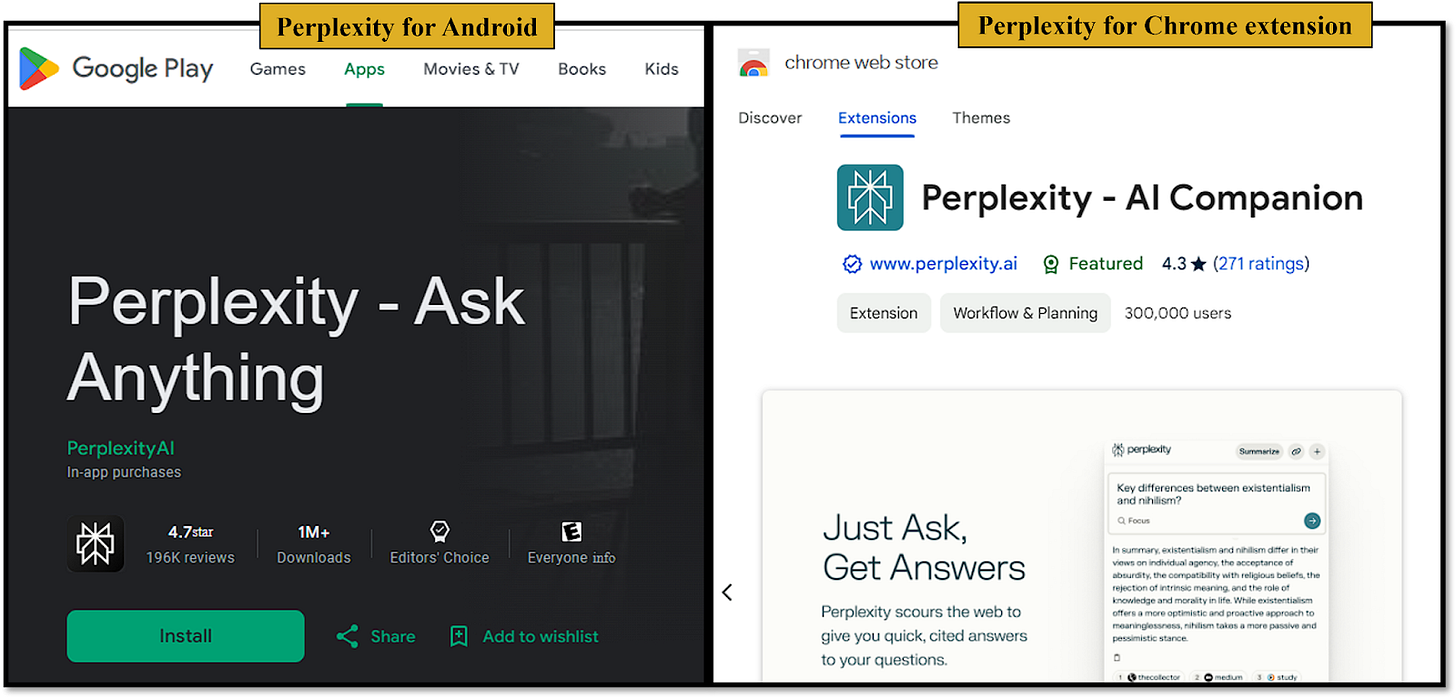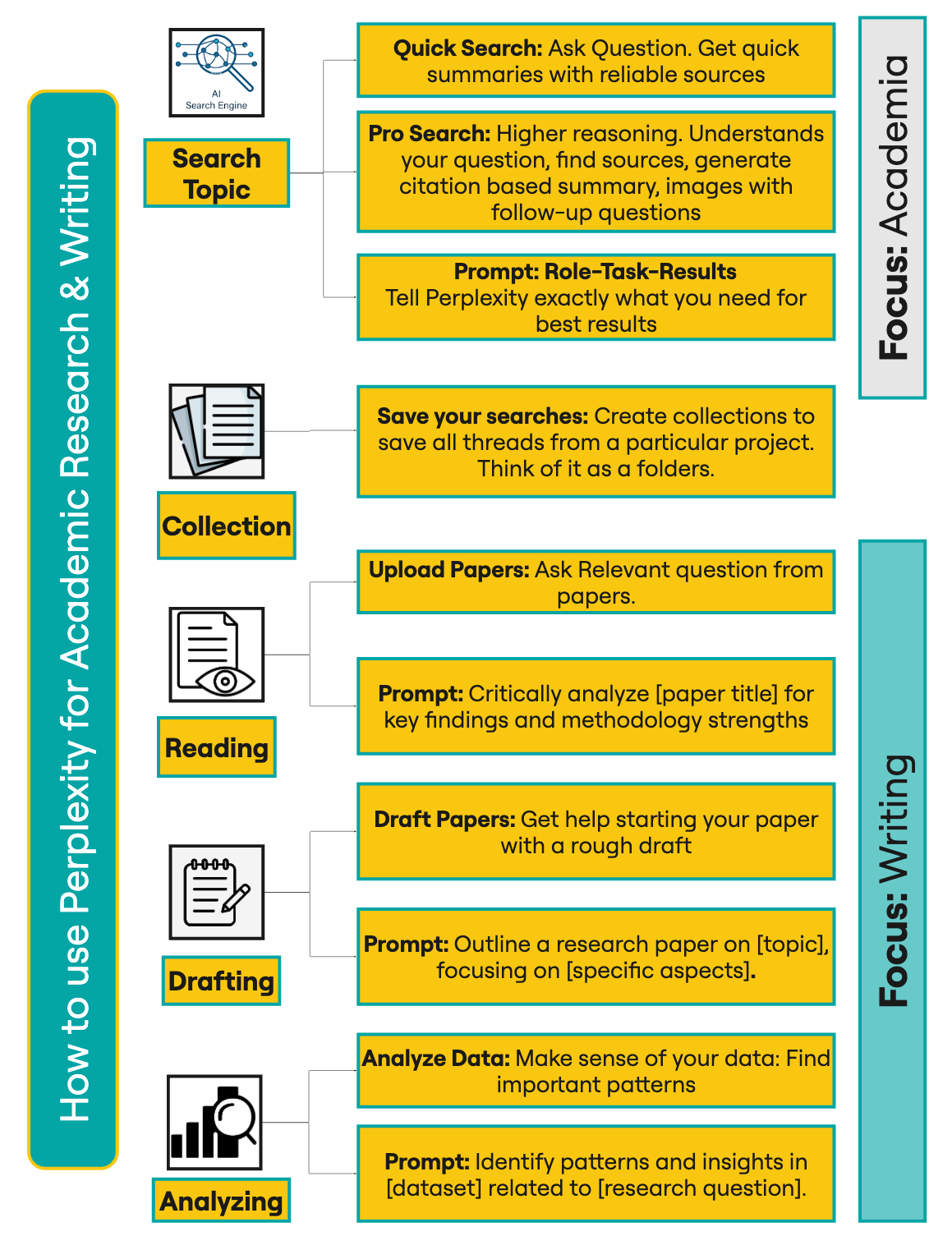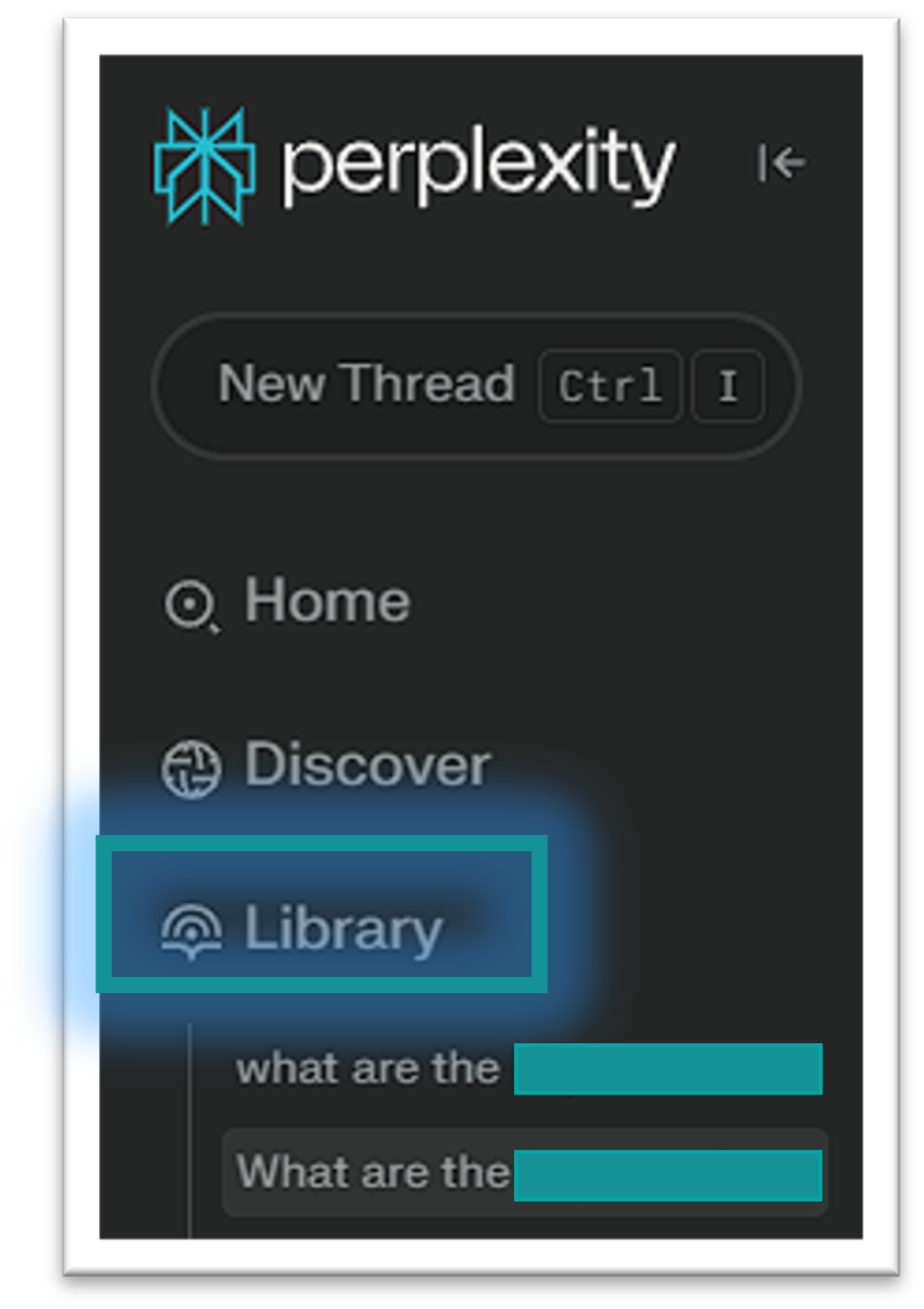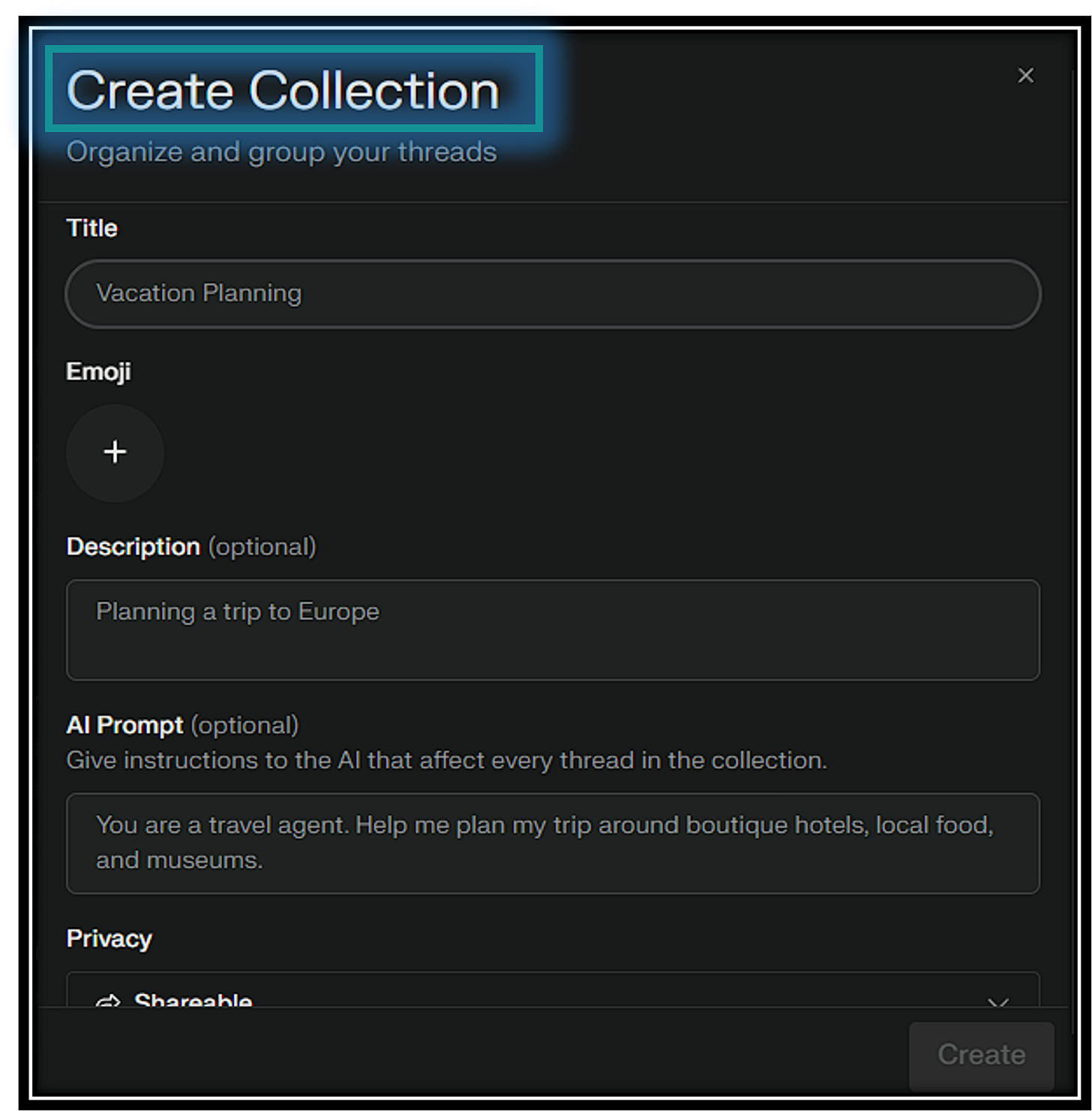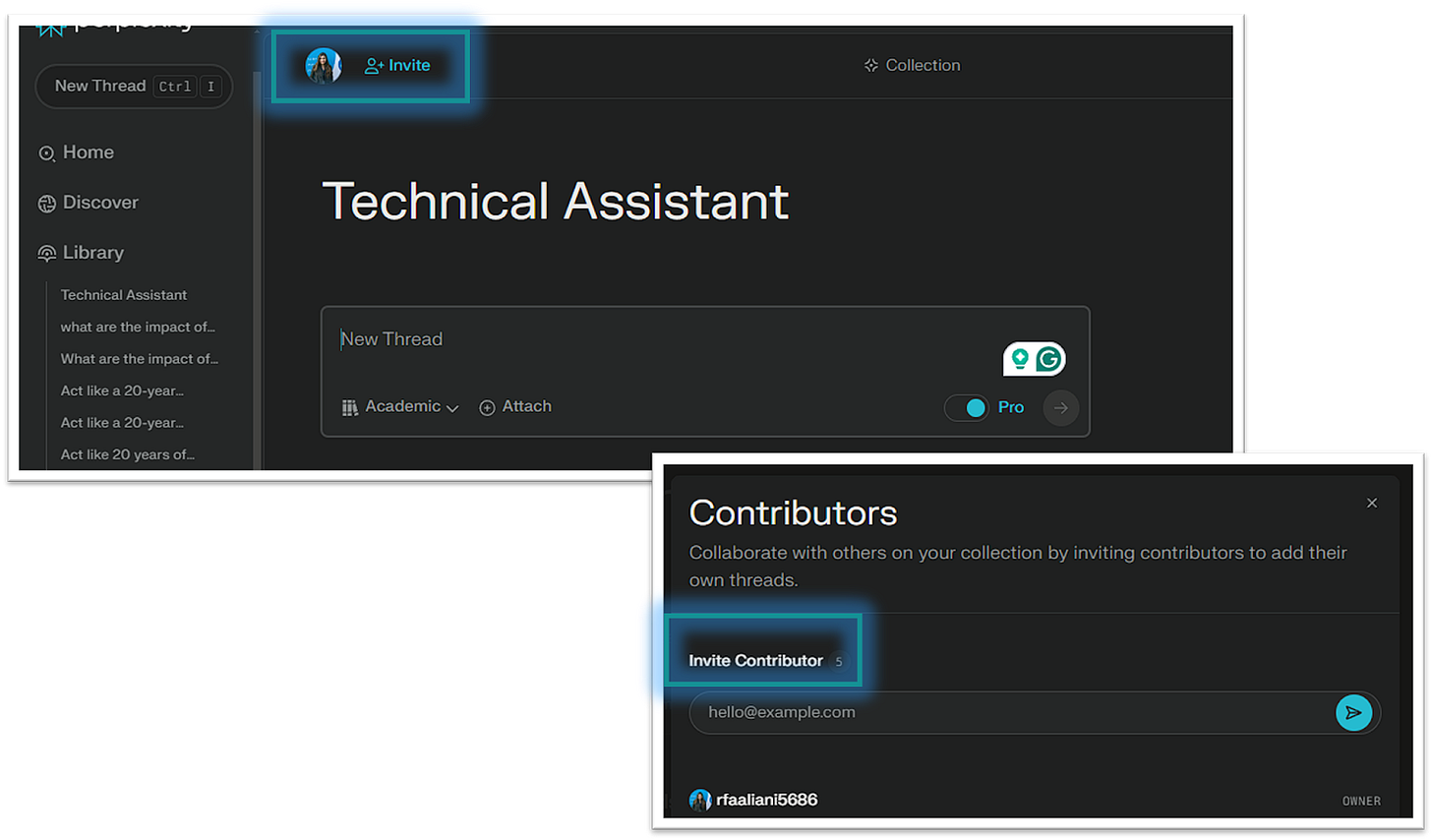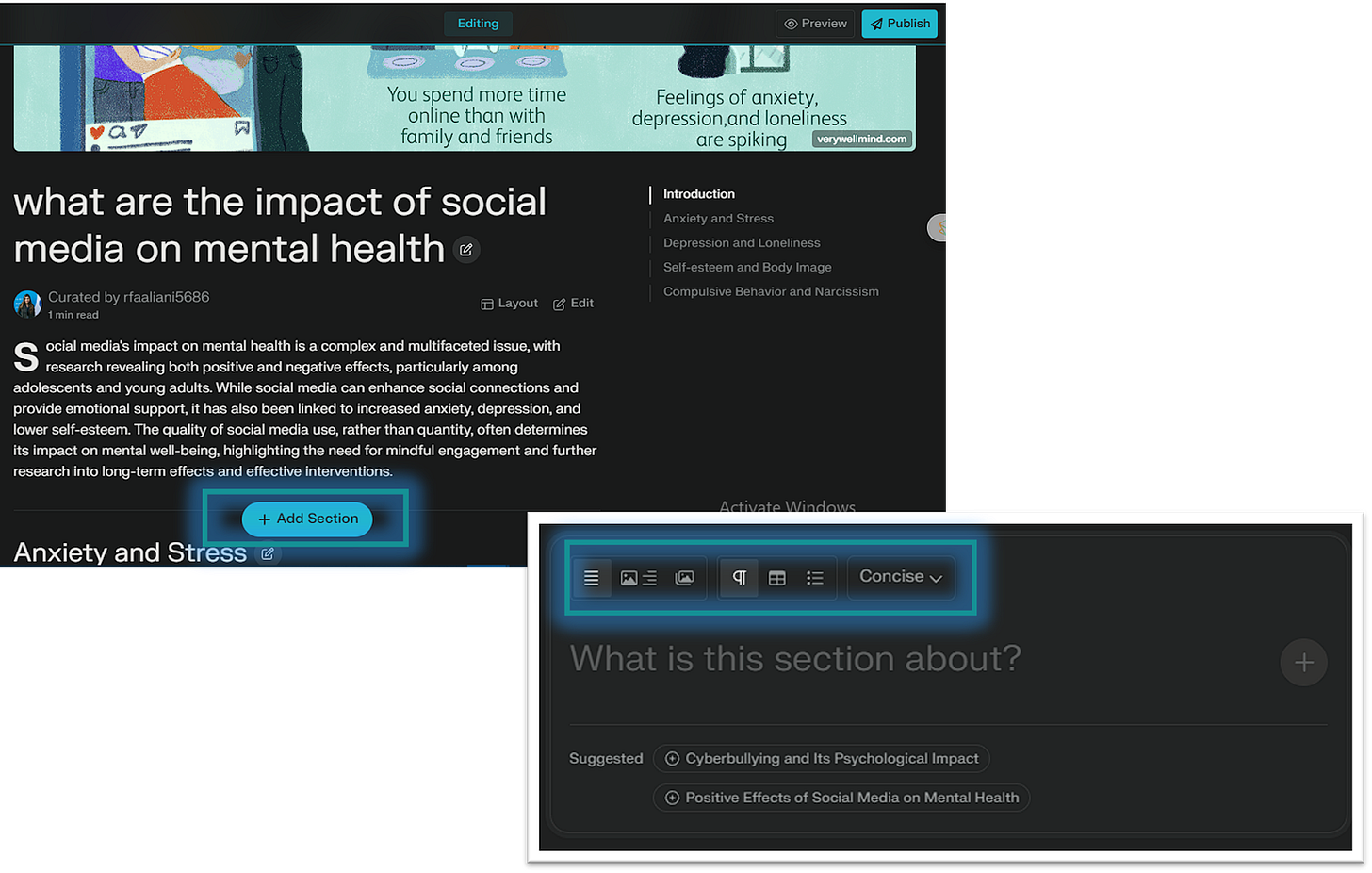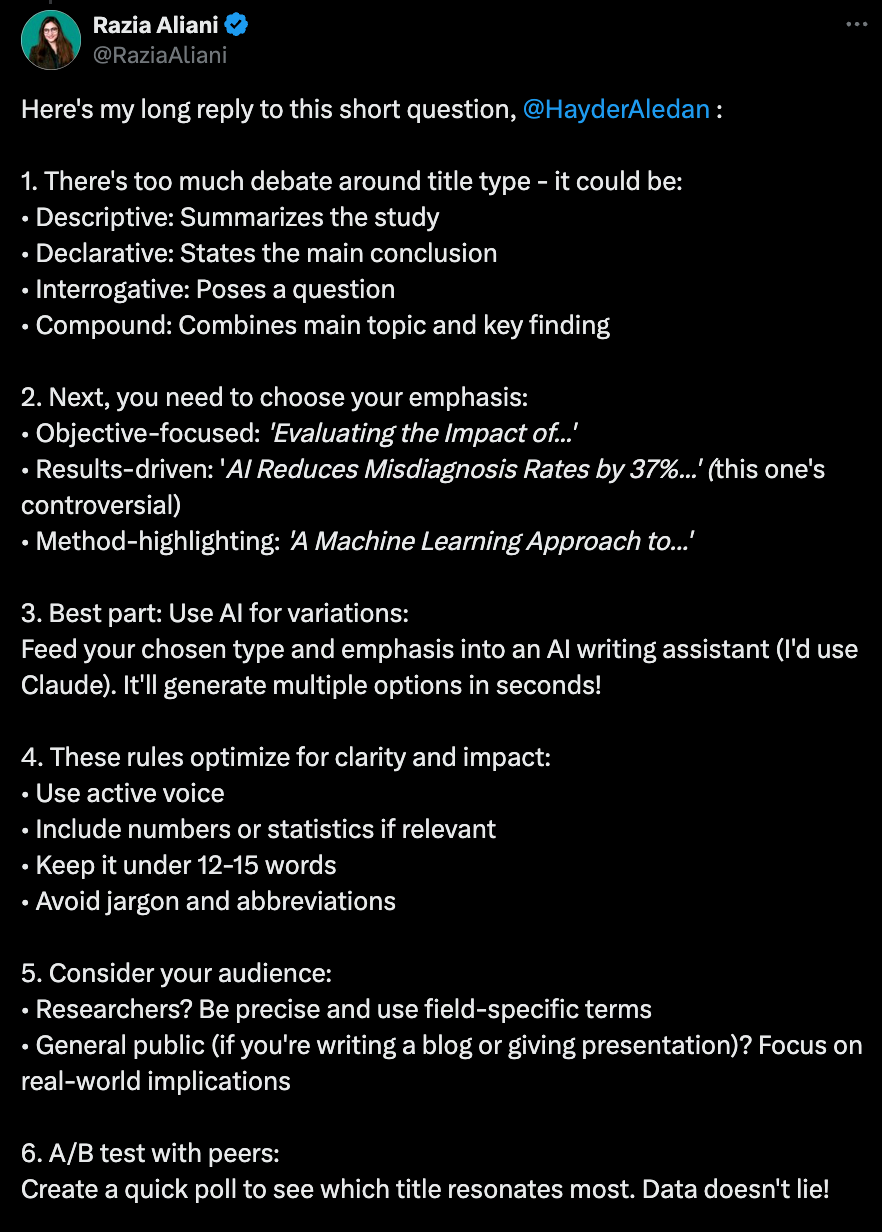How to use Perplexity for Research: Part 1 of 3
The only guide you need to ace Perplexity for your research needs...
Perplexity: An AI-powered Search Engine for Research
In this newsletter, I’ll talk about how Perplexity Search Engine differs from a traditional search engine (aka Google). I’ll share how I use it daily to research complex topics and how you can incorporate it into your daily workflow to experience the difference.
This newsletter is the first part of the 3-part Perplexity series - by the end of this series, you’ll be able to confidently use Perplexity for your research!
Part 1 is all about Perplexity's foundations, from LLM types and cross-platform access to intuitive content organization in the Library. The initial few paragraphs in this newsletter is more of an introduction to the platform so if you are already a Perplexity champ, feel free to quickly skim through.
Part 2 will go a bit deeper into the advanced capabilities with Focus and Pro searches, media analysis, and draft generation.
Part 3 is my favorite, where you’ll master the art of crafting effective prompts for literature searches, critical analysis, and research paper development.
Btw, the 25% off code for the Masterclass has now expired - I’m providing discounts case to case basis. Here’s the most recent testimonial I’ve received:
Also, if you’re interested in exploring Claude, join the webinar waitlist.
Before I move on, a quick shoutout to Professor Nacke’s Write Insight newsletter that offers practical academic success strategies, effective writing frameworks, and insights on AI research tools for scholars. Join 4000+ academics to enhance your research skills and stay informed about developments in academic writing and tech
Now, back to Perplexity ⬇️
(& btw you can get $10 off Perplexity if you sign up from this link)
Perplexity Differs from a Traditional Search Engine
Google Search Engine:
Searching on the internet has been the same for decades. Traditionally, we have relied on Google to search for relevant research papers. For example:
We type our research keywords in the search bar, and the mighty Google returns a list of websites where you could find an answer to what you are looking for.
Google does a pretty good job at putting the best websites in front of you but getting the most relevant information can still be difficult.
With Perplexity AI-based search engine, you skip the task of reviewing the top 10-15 search results. It offers:
An AI-based Summary of these pages to get the answer to your question with citations to cross-check the references.
A Research Assistant with a minimal chat interface. Some key features are:
i) Chatbot interface that allows natural language queries.
ii) Summarizing search results into a direct answer.
iii) Providing citations to verify information.
iv) Real-time updating with the latest information.
v) Integrating results from Bing, Wikipedia, Reddit, YouTube, etc.
As a researcher,
You can efficiently search for relevant web pages, as every output of Perplexity is backed by several, mostly relevant, references.
Upload your research paper as a PDF/text file to summarize and get what you want from it, saving time.
Now let’s dive deep into the powerful features of Perplexity AI that can help with your research.
1- Large Language Models (LLMs)
Although this is a Pro feature, but being able to switch across LLMs is one of the coolest features of Perplexity. If you are familiar with LLMs and frequently think about choosing the best LLM for your task, then this feature is for you.
As of the date of this newsletter, Perplexity supports:
Default by Perplexity
Claude 3.5 Sonnet by Anthropic
Sonar Large by Perplexity
GPT-4o by OpenAI
Claude 3 Opus by Anthropic
Llama 3.1 405B by Meta
Their own in-house developed model, optimized for speed (and likely trained with open source models) is the one which gives you the default results and you have to choose a model of your liking in the settings if you are not satisfied with the default results.
It also allows you to generate images from three different image generation models (Playground, Dall-E and Stable Diffusion - yeah, no Midjourney here) which you can choose in the same settings panel.
2- Mobile App and Chrome Extension
If you love to use Perplexity on your browser, great! But, it is not limited to that.
Perplexity is also available as an app on Android or as a Chrome extension.
It lets you summarize any opened webpage or even obtain specific answers from any page.
A Quick Overview of Perplexity’s Features
You might have seen my Twitter post on this - in case you missed it, it’s here.
I had shared a workflow on how perplexity works and how it helps you with your research from searching, reading to drafting and analyzing within a single graphic:
You can use Perplexity without signing up but I recommend creating your account to be able to save your conversations and chats.
But before going deeper into the Perplexity’s features, play around to understand the main page interface… Perplexity’s homepage is a great UX at organizing your thesis, research articles or proposals in one place without switching across a million tabs.
Next, let’s take a look at it’s collections feature along with the ability to collaborate on these collections.
Content / Research Library and Collaboration with co-authors.
Perplexity has a dedicated Library page where you can organize all your chats - known as Threads. This is also where the collections organizer also exists. Head over to the Library section by clicking ‘Library’ on the homepage:
In the middle part of the screen, all your generated outputs in the Perplexity window will be saved in the Library.
The Collections section (on the right) within the Library page makes it easier for you to find and collaborate efficiently. Right below the search bar, you can see the Collection + button. To create your first collection in the library, click on this Collection + button and you will see a popup appear.
Fill in the details by entering the title, icon, and a default AI prompt that will apply to all threads within that collection. Keep the privacy option to ‘Shareable’ as we want to invite other collaborators to our collection.
Once you’ve created a collection, you can save any thread you want in it.
Now, once you go to your newly created collection by clicking it within the collections list on the right, then, on the top left, there is an option to invite. Enter the co-author or research partner's email address and hit send.
There are also other sharing options when you click on the Share button on the top right corner. Here, you can either keep your collection private or make it so that anyone with the link can view it.
Pages - In Perplexity
You can convert your responses into pages that serve as a zero draft of your research paper/proposal.
You can add more sources, and images and edit and format them directly into the Perplexity window.
With that said, that’s enough for today’s newsletter (phew 😅)
Stay tuned for Part 2, in which I will teach some more features of Perplexity in detail and how you can use them in your research work with some real examples - and then we will close this series with the super useful mega-prompts (in Part 3).
When you ask a question that could benefit others, I address it in my newsletters.
You can send in your question either by clicking 'reply' or commenting on the post ⤵
This time, instead of a subscriber question, I’ve picked a question a senior academic asked on X:
And here’s the screenshot of my response:
Learned something new in this post?
🔁 Like and Share




